21. September 2016 06:15 /
Manoj
/
Gemstone Beads
Comments
(0)
Lapidary is the science and art of cutting stone, creating beautiful items of collection from them. It is often used to describe the cutting of gemstones but now used to signify the entire process of gemstone manufacturing, from cutting to polishing and colour enhancements. Here are some important terms every buyer and gemstone collector should know about lapidary.
Tumbling:
It is the simplest process of cutting gemstones. It is similar to the action of the river water on the pebbles lying on the bed. Tumbler is an abrasive process, where rough gemstones are put into a tumbling well fitted with abrasives. The rough surface is instantly smoothened without fracturing the gems. Semi-precious rocks are tumbled for high lustre, and preferred because of its low-cost technique. However, it is not recommended for gemstone with hardness less than 5.
Cabbing:
It is better known as Cabochon cutting, and remains the best procedure to cut precious gemstones. Diamonds, rubies, emeralds and sapphires before 19th century were cut in the cabochon. How is cabbing done?
Cabochon gemstones are cut with a flat bottom and curved or pyramid/domed top. Cabbing is done to enhance the resale value of the gems, especially opal gemstone and turquoise gemstones. Cabbing is more sophisticated than tumbling.
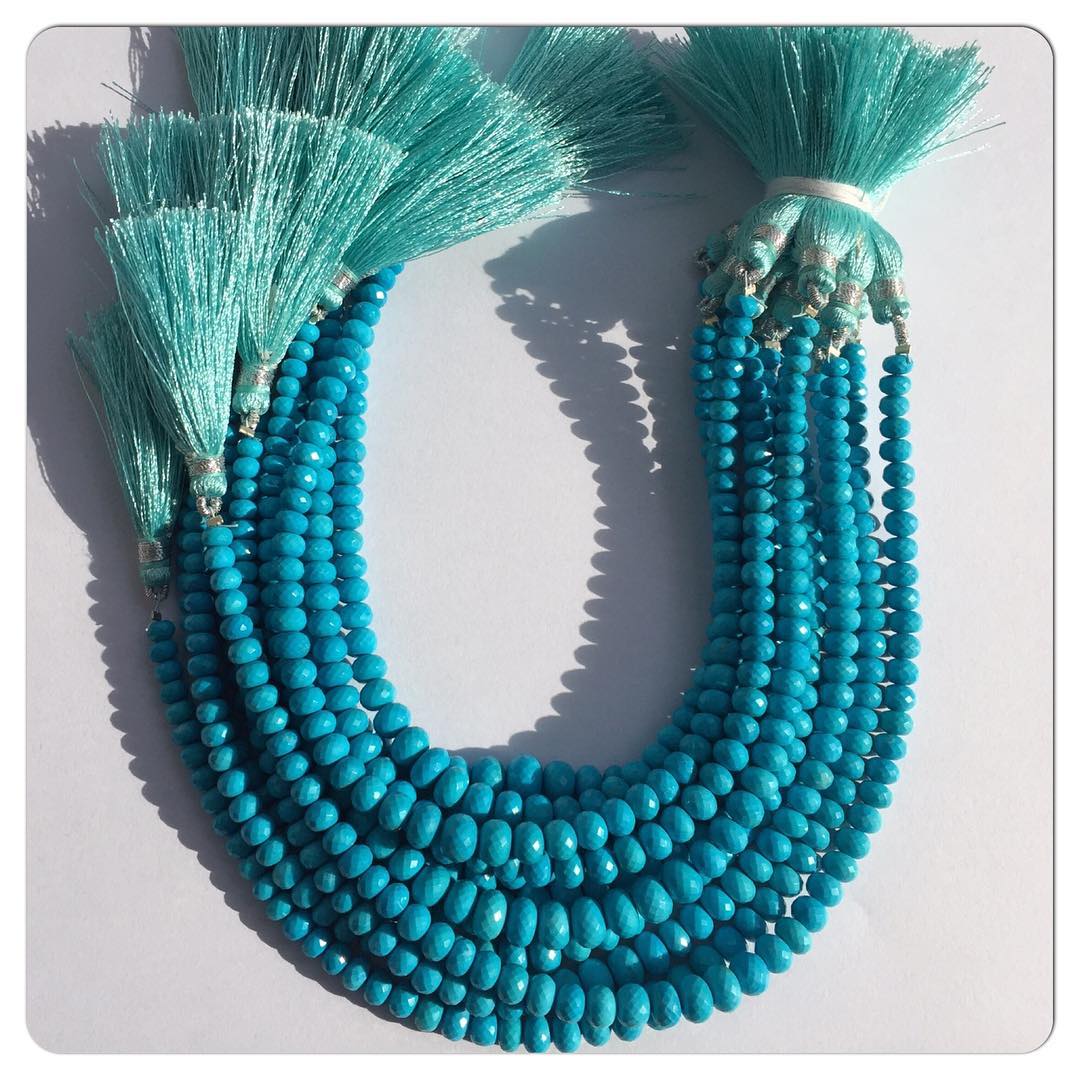
Polishing cabochons:
There are hundreds of gemstone polishing techniques, but cabochon polishing is very unique. It involves the use of aluminium oxide and cerium oxide. Stones that are susceptible to heat treatments are cut and polished in cabochons. Opals and quartz are cut using cerium oxide, while jade is polished using chromium oxide.
Ruby and sapphires are polished using Diamond Polish, fitted on leather pads. It is a costly process.
Faceting:
Faceting, undoubtedly, is the most economical lapidary technique in the list. Most diamonds gemstone and sapphire beads set on engagement rings are cut in facets. Faceting is the cutting of gemstones in polygon, polyhedron, and polytope, without adding any new vertices.
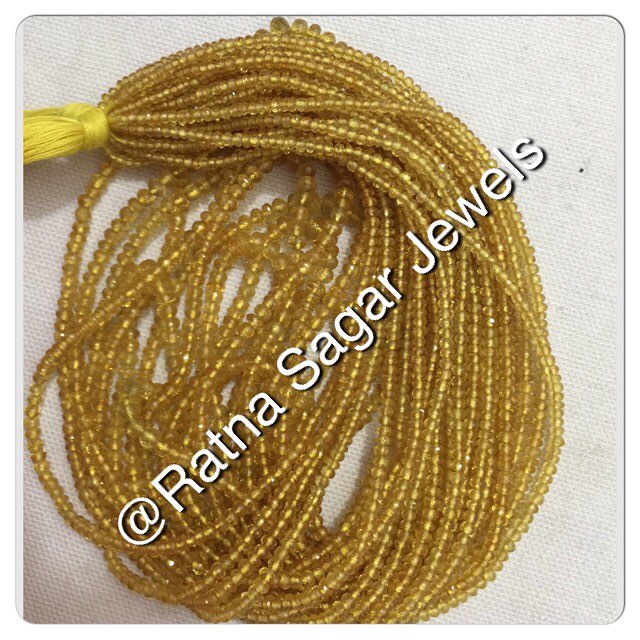
The faceting methodology involves the mounting of the crystal on a metallic dowel/dipstick and then fed to the faceting machine. The faceting machine works on the crystal in two sequences—cutting the Crown, and then Pavilion simultaneously. Lapidary artists work with HAI factors, where H is Height, A is Angle and I is Index.
Faceting quality is established by studying the 5 Ps of analysis—
• Points
• Proportions
• Polish
• Positioning
• Performance
Carving:
Next most important gem cutting technique is the carving. All faceted and cabochon cut gems feature disciplined shapes such as domes, ovals, circles, and squares. Carving involves cutting a gemstone in such a way that they reveal peculiar tunnels, inclusions, and channels with deep plateaus and trenches. It is the mother technique associated with modern-day Fantasy cuts.
• Fancy Cabochon Shapes:
Carving of cabochon cut gems gives a fancy feature like Emerald cut, tear drops, ovals, hearts and pears and Marquis cut.
• Cushion Cut:
They are cut and carved in square and rectangular shapes like a cushion. Shield cut, Ceylon cut, Brilliant cut and Barion cut, all owe their existence to the carving techniques.
e5a6ef92-97b1-4bcf-bd92-8be87d9fe2a5|0|.0|27604f05-86ad-47ef-9e05-950bb762570c
Tags
: Opal Gemstone . Turquoise Gemstone Beads . Sapphire Beads . Diamonds Gemstones
20. September 2016 05:53 /
Manoj
/
Gemstone Beads
Comments
(0)
Zultanite is the new luxury on the gemstone block, rocking the collector’s box in style. It was first cut in the 70s, but continued to lay low in the gemstone market, owing to its rarity and high cost of manufacturing. Zultanite gemstone is now manufactured and marketed through Zultanite Gems LLC, which has the sole right over the only known mine in the world. It is located in the Turkish valley at a height of 1000 metres.
Zultanite is now a registered trade name given to the new-age colour changing gemstone similar to diaspore.
Why is it called Zultanite?
Owing to its origin, Zultanite is named to commemorate the rich history of the Ottoman Turks. The name is derived from the word “Sultan”, meaning king in Persian language. It is the trade name for Diaspore mineral.
What is diaspora?
Diaspore, also called diasporite, tanatarite and kayserite in the market, is the only related mineral to Zultanite. In terms of composition, diaspore is an orthorhombic crystal made of aluminium oxide hydroxide with lamellar and scaly inclusions. Gem-quality diasporite is mined from Slovakia. It is a relatively hard structure with Mohs Scal value of 6.5. It is identified from its pearly lustre that turns into white scales on being exposed to high temperature. It is mined from limestone quarries, where it occurs as isomorphic form of emery and corundum. It is often considered as a suitable ore of aluminium, but reserved instead exclusively for gemstones manufacturing.
Zultanite pricing:
In top-grade markets, zultanite is priced at $600 and above per carat. Bigger crystals are priced at $5000 per carat and above. The pricing differs based on the intensity of colour variation and the way it is cut. Cabochon and Princess-cut diasporite zultanite fetch the highest bidding price from the market.
Speciality of zultanite:
Why is zultanite considered the best gemstone in the market? For one reason for sure… it is tagged as the Gemstone chameleon by leading sellers. It is available in more than 10 contrasting varieties, ranging from olive green to flashes of canary yellow. When it comes to choosing a colour, you have your hands full. There is one zultanite for every occasion—a candle light dinner, a cave escapade, a swimming pool party, and even your anniversary!
1. Colour changing gemstone:
Like Alexandrite, garnet, fluorite and sapphire, zultanite gemstone is known for its multiple colour varieties, appearing casually in a single crystal. Darker the tone, higher will be the price. Larger Zultanites have darker play of colours, with intense, contrasting varieties.
2. Usability and assurance:
Zultanite is a daily-wear gemstone, hardly affected by the corrosive action of the environment, acid and work. However, it could get scratched or fractured under intense pressure. Steaming and ultrasonic cleaning of the gemstone are not recommended.
Every zultanite comes with a guarantee card carrying every detail related to its origin, the date of mining, enhancement done and colour statistics.
Today, zultanite is rapidly turning into a celebrity gemstone owing to its compatibility with every complexion, personality and styling.
bcd390f3-4268-4805-9857-f4a0bb313701|0|.0|27604f05-86ad-47ef-9e05-950bb762570c
Tags
: Zultanite Gemstones . Wholesale gemstone beads . Gemstone beads Suppliers
19. September 2016 07:02 /
Manoj
/
Gemstone Beads
Comments
(0)
Confusion in names can led to significant damage in gemstone reputation and market share. Rubellite is one such gemstone that faced the poor marketing, as it was often sold as a ruby gemstone early in part of the 20st century. Even today, not many gemstone buyers and collectors are aware about the value of rubellite.
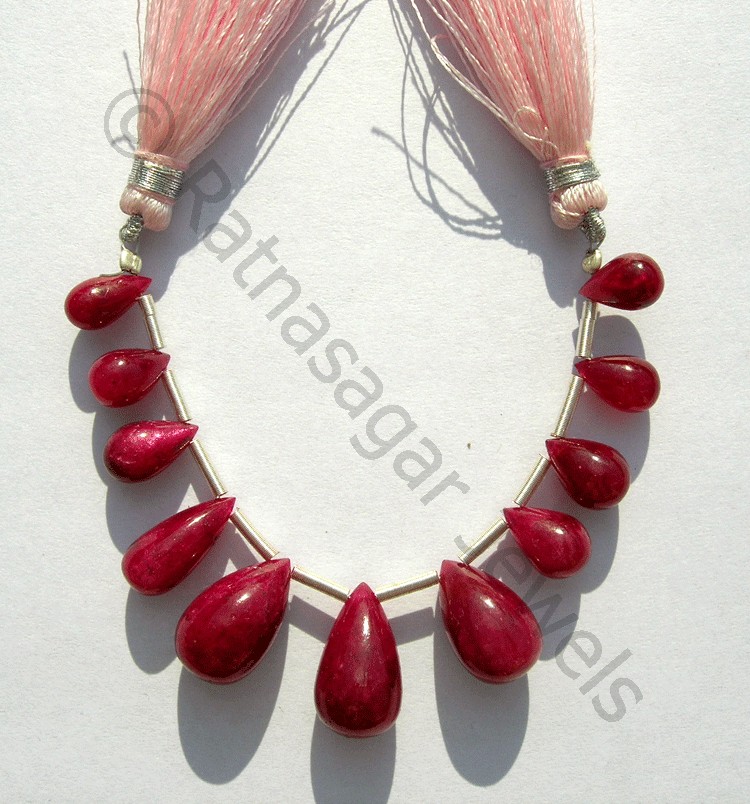
Here are 6 scintillating facts about Rubellite gemstone that one must know about.
1. Rubellite: The family:
Rubellite is a colourful, pink-red gemstone belonging to the family of tourmalines. They are created under intense pressure, showcased through the variety of colours they exhibit, ranging from shocking pink to ruby red.
2. Rarity quotient:
Rubellite, unlike rubies, is a very rare gemstone, and is adored for its purity and clarity. Its name is derived from the Latin word for red, “rubellus”. Every year, 100,000 carats of rubellites are mined from different parts of the world. Unlike Burma Rubies, the rubellites are hardly found in Asia, except for in Paksitan, Afghanistan and Kirghizstan. Top producers of rubellites are Brazil, Madagascar and Nigeria.
Its rarity quotient drives the price tag in the market.
3. Qualities that make it special:
Rubellite is a pyro-electric gemstone. It is capable of generating an electric potential when heated or cooled. The crystalline structure is polarized when exposed to a differential temperature, resulting in generation of a voltage. In that sense, rubellite shares its property of pyro-electricity with quartz, elbaite, leucophanite, and mellite.
4. Different names in the market:
Rubellite is referred to as a tourmaline gemstone with sparkling pink colour. However, there are other shades too, and they are known by different names. For instance, blue rubellite is called indicolite, and the green ones are called verdelite. Ruby colour is the most valuable, and that’s why
it is competing for attention with the rubies.
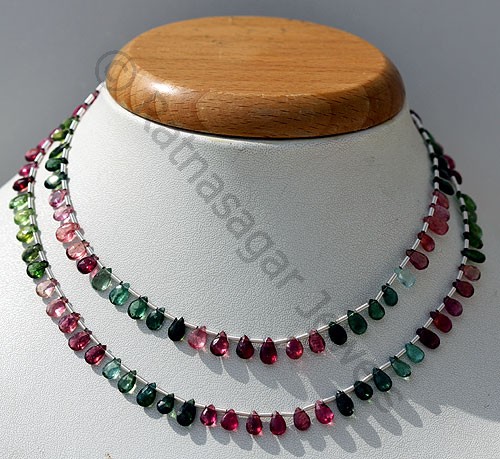
It is called red tourmaline, but rubellite sounds all the more catchy.
5. Uses and purpose:
Rubellite, owing to its pyro-electric properties, helps in preventing body shocks. It neutralises the harmful effect of microwave, UV rays and visible radiation from the electronic gadgets. Scientists working in nuclear field are advised to use rubellite gemstone bracelets to keep the radiation exposure within limits.
According to the gemstone experts, rubellites are an excellent source of optimism and energy, used by professionals to stay on track of success. It also empowers the students to score better in competitive examinations.
It is referred to as the Emotional Healer, owing to its effect on the Heart Chakra. It helps in overcoming fears of accident, darkness, instability and mental sickness. Mediation with rubellite is now catching up with the spiritual leaders. It rebuilds confidence and self-esteem in the person wearing rubellite.
6. Rubellite enhancements:
Irradiation is the common enhancement treatment done on rubellites. It is done to produce clear and consistent red pink shade. It is undetectable and does not change the overall beauty of the stone. Only Fourier Transform IR Spectroscopy can manage to detect the enhancements made on them.
Due to its hardness of 7.5, it is great for long-term use.
340ab072-a04d-4c4f-a6a2-337990f80399|0|.0|27604f05-86ad-47ef-9e05-950bb762570c
Tags
: Tourmaline gemstone beads . ruby gemstones . Rubellite gemstones . multi color Tourmaline beads
17. September 2016 06:02 /
Manoj
/
Gemstone Beads
Comments
(0)
In 2006, red beryl gemstone made it to the top of the rarest of rare gemstones in the market, selling at $75,000 per carat, with only 100 stones cut in a month! Laying hands on them is indeed nothing short of a blessing, considering its impeccable beauty, seductive lustre and pristine surface. However, there are some scintillating facts that you should know about the red beryls.
1. Family of winners:
Red beryl, as the name suggests, belongs to the beryl family. Its rarity can be gauged from its pricing and availability. For every 150,000 diamonds registered as gem, only one crystal of red beryl makes it to the market. Called as Red Emerald gemstone, the history of the stone is very recent, and clouded in disputes.Red Beryl Gemstone, Red Emerald gemstones, Wholesale gemstone Beads
When it was discovered in 1904, it was named as bixbite, but subsequently changed to its present name after clashing in interest with Bixbyite sellers.
2. What is it made of?
Red beryl is a silicate mineral with Manganese ions. The intensity of the colour can be measured from its Mn+3 ion. To be precise, it is a beryllium aluminium cyclo-silicate found in volcanic vents of Wah Wah Mountains in Utah. The geochemical transformation in the earth’s crust resulted in crystallization of the gemstone at a temperature above 650o Celsius.
The red beryl is so rare on account of its formation. It can’t be recreated in lab conditions either, resulting in limited availability in the market. Beryllium is not found in large quantities, and it requires presence of dissolved manganese at lava temperatures to create this crystals.
3. Where is it mined from?
Ruby-Violet Claims is the only known source of the red beryls. Located in Utah, the site is known for other gemstones as well. Morganite, aquamarine, golden beryl and goshenite are other significantly high-priced gemstones extracted from the region.
4. Is it hard?
Red beryl is a durable gemstone with a hardness ranging between 7.6 and 8. It is usually given a Princess Cut in engagement rings. It is very difficult to cut them owing to the elongated hexagonal crystalline structure, generally measuring only about 10 mm, with a thickness less than 5mm. They are not given modern faceting.
The largest gemstone in red beryl family is a 54 carat item. Faceted gemstone weighed only 8 carats.
5. Pricing and value:
By weight alone, red beryls are priced 1000 times more than gold! Top grade crystals sell for above $75,000. Even the average quality gemstones fetch a prize of $10,000 per carat.
Artificial intruders:
In late 90s, Russian gemstone makers flooded the market with artificial red beryls. However, by July 2016, all labs producing such red beryls ceased to exist. Apart from the colour and clarity, the artificial gemstone hardly bears any resemblance to the original stones.
Red beryl clusters are the most pronounced formation in gemstone industry, found extensively in Harris Claim in Wah Wah Mountains in Utah. As a buyer, stay clear of the emeralds that are tagged as red beryls to mislead novice collectors.
00345137-3699-4284-9320-7375982b0a24|5|4.0|27604f05-86ad-47ef-9e05-950bb762570c
Tags
: Red Beryl Gemstone . Red Emerald gemstones . Wholesale gemstone Beads
15. September 2016 05:27 /
Manoj
/
Gemstone Beads
Comments
(0)
Andalusite is an extremely rare and unique gemstone, and has a heavy caring regime following its existence. Used largely in jewellery as a ring stone, Andalusite is revered for its diverse colour exhibition occurring due to its trichroic pleochroism effect. Available in multiple colours, most gemstone cutters minimize the effect by cutting them in particular styles, and exaggerate one particular colour. Andalusite being very hard and durable hardly requires any special care, but it is better to be careful with the use in the long run.
Here are some helpful Andalusite shopping tips for new buyers.
Choosing colours:
Andalusite is available in diverse colours like pink, green, red, grey, dark brown and olive green. Depending on the concentration of impurities like Manganese and Iron, the colour could be deep pink and red. Iron in Andalusite could be anywhere between 1.5 to 4.4 % by weight, mostly occurring in Fe3+ and Fe2+ forms. Presence of iron ions gives it a paramagnetic property as well.
Corner Stone reverence:
It is referred to as Lapis crucifer, or a corner stone due to the presence of rutile inclusions inside the Crystal. Since ages, this is considered as a sign of reverence, and hence has higher demands. Andalusite with black particles of graphite occurring in geometric patterns is actually named as Chiastolite. It is formed during the metamorphism of the rocks.
Cut:
The cut is the most important aspect of buying any ring, especially Andalusite that exhibits pleochroism effect. The rings made of Andalusite gemstones are cut in round and rectangular cushion shape. Pear, round, cushion, emerald and oval are common shapes available in the market. Depending on the colour brilliance, the cutting glorifies the darker and lighter shade empathically.
Source of gemstone:
Brazilian varieties have highest demand in the market. Sri Lankan Andalusites are equally revered for their clear and lustrous appeal. In recent times, gemstones from UK, Spain and Australia too have made their mark in the market. Purity of the stone is an important aspect, and Brazilian gemstones are popular for this reason.
The source of gemstone also mean that you are buying Andalusite, and not its polymorphic varieties—Kyanite and Sillimanite.
Imitations:
Andalusite gemstones are hardly exposed to heat treatments. They are mostly available in colourless and light pink varieties. Darker gemstones however are treated to lighten their lustre. Since this is a reversible process, it is hardly recommended. Meanwhile, imitation market is full of Andalusite faux gemstones, which can be identified from its pleochroism property.
Stone preservation:
Since Andalusite is a natural gemstone, there could be presence of radioactive elements in it. Always get them checked from certified laboratories. They could be harmful, and on top of it decay in the long run, leaving an amorphous residue with no significant value.
Apart from this, get coated Andalusite gemstones that are resistant to chemical effect and UV rays. Light coloured gemstones could reverse back to its darker shade on exposure to sun rays.
dee0b313-801a-4e10-997d-f654dcb99fb8|0|.0|27604f05-86ad-47ef-9e05-950bb762570c
Tags
: Andalusite Gemstones . Andalusite Gemstone beads . Wholesale gemstone beads . Quality gemstone beads
14. September 2016 06:29 /
Manoj
/
Gemstone Beads
Comments
(0)
Morganite is a stunningly beautiful, pink coloured gemstone that was first discovered only in 1911! Despite being on the planet for 4 billion years, it evaded the eye for so many years only because of its elusive mines. The gemstone occurs in the form of complex granite crystals like squat and tubular structures.
Here are 6 Morganite Gemstone market facts that will help you make a better choice while shopping.
1. Colours:
Morganite gemstone is also called as the pastel stone, by virtue of its light pink shade. The colour is not consistent and usually reveals other related colours like orange pink, beryl red and purple. Darker gemstone in Morganite family is very rare, but they do fetch good price.
Morganite gemstones are classified on the basis of colours like rose, peach, salmon and blush. Pink and rose tinted gemstones are very popular and used to make Engagement Rings and Anniversary Rings.
2. Clarity and lustre:
Morganite gemstones do not have any visible inclusions. They are clear and have lustrous appeal, which is used exclusively as cabochon. It reveals a distinct colour property called pleochroism, with pale pink and deeper bluish pink highlights when exposed to UV ray. Morganite can be cut in standard shapes and sizes with unique fantasy designs.
Modern cutters explore the contemporary designs in pear, round, oval, square, heart, marquise, emerald to bring out the Cat’s Eye phenomenon lavishly.
3. The Price connection:
Morganite is named after one of the most famous financiers in the modern history, JP Morgan. Morgnaite is a high priced gemstone owing to its association with the red beryl. However, there are other colour varieties too like yellow and orange morganite.
In 1989, the largest morganite was extracted in Maine, USA. It weighed over 23 kilograms and was named as “The Rose of Maine”. It was not a pink variety but an orange one.
4. Pink Emerald tag:
The stone is tagged as the Stone of Unconditional Love, and associated with the matters of heart and thymus. It resonates with the Divinity of Heart. Found in Thailand, Brazil, Madagascar and USA, Morganite or Pink Emerald as it is marketed all round the world, has some of the most beautiful siblings in the family, For instance, Goshenite, which is a colourless beryl similar in property to that of the Morganite. Bixbite is another Morganite sibling which is used in gem industry for its ravishing red appearance.
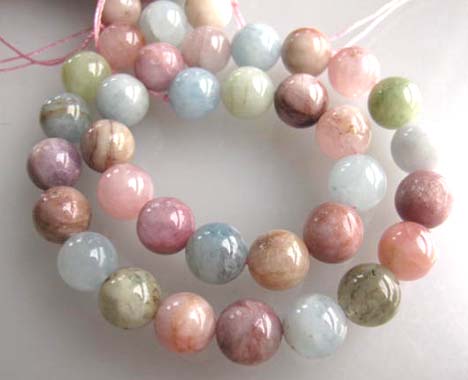
5. The Emotional Healer:
Morganite, as revealed earlier, is associated with the Heart Chakra. When worn in a necklace close to the breastbone, it cures the issues in relationship. It has a balancing effect on the health, life and finances. It cultivates a spirit of universal love, and adored by spiritual leaders and politicians.
6. Pricing:
Best Morgnaite varieties can fetch $300 per carat. Princess Cut Morganite engagement rings weighing 0.6 carat with Type III clarity index will cost around $100 per carat. Depending on the colour and origin of the stone, the prices do vary. Trilliant cut and Pear Shape morganites are priced at $450 per carat and above.
0761432b-510c-457d-8cd1-ca2f899ec3a8|0|.0|27604f05-86ad-47ef-9e05-950bb762570c
Tags
: Morganite Gemstone . Gemstone Beads . Gemstone Beads Online . Wholesale Gemstone Beads . AAA Gemstone Beads
14. September 2016 06:29 /
Manoj
/
Gemstone Beads
Comments
(0)
Morganite is a stunningly beautiful, pink coloured gemstone that was first discovered only in 1911! Despite being on the planet for 4 billion years, it evaded the eye for so many years only because of its elusive mines. The gemstone occurs in the form of complex granite crystals like squat and tubular structures.
Here are 6 Morganite Gemstone market facts that will help you make a better choice while shopping.
1. Colours:
Morganite gemstone is also called as the pastel stone, by virtue of its light pink shade. The colour is not consistent and usually reveals other related colours like orange pink, beryl red and purple. Darker gemstone in Morganite family is very rare, but they do fetch good price.
Morganite gemstones are classified on the basis of colours like rose, peach, salmon and blush. Pink and rose tinted gemstones are very popular and used to make Engagement Rings and Anniversary Rings.
2. Clarity and lustre:
Morganite gemstones do not have any visible inclusions. They are clear and have lustrous appeal, which is used exclusively as cabochon. It reveals a distinct colour property called pleochroism, with pale pink and deeper bluish pink highlights when exposed to UV ray. Morganite can be cut in standard shapes and sizes with unique fantasy designs.
Modern cutters explore the contemporary designs in pear, round, oval, square, heart, marquise, emerald to bring out the Cat’s Eye phenomenon lavishly.
3. The Price connection:
Morganite is named after one of the most famous financiers in the modern history, JP Morgan. Morgnaite is a high priced gemstone owing to its association with the red beryl. However, there are other colour varieties too like yellow and orange morganite.
In 1989, the largest morganite was extracted in Maine, USA. It weighed over 23 kilograms and was named as “The Rose of Maine”. It was not a pink variety but an orange one.
4. Pink Emerald tag:
The stone is tagged as the Stone of Unconditional Love, and associated with the matters of heart and thymus. It resonates with the Divinity of Heart. Found in Thailand, Brazil, Madagascar and USA, Morganite or Pink Emerald as it is marketed all round the world, has some of the most beautiful siblings in the family, For instance, Goshenite, which is a colourless beryl similar in property to that of the Morganite. Bixbite is another Morganite sibling which is used in gem industry for its ravishing red appearance.
5. The Emotional Healer:
Morganite, as revealed earlier, is associated with the Heart Chakra. When worn in a necklace close to the breastbone, it cures the issues in relationship. It has a balancing effect on the health, life and finances. It cultivates a spirit of universal love, and adored by spiritual leaders and politicians.
6. Pricing:
Best Morgnaite varieties can fetch $300 per carat. Princess Cut Morganite engagement rings weighing 0.6 carat with Type III clarity index will cost around $100 per carat. Depending on the colour and origin of the stone, the prices do vary. Trilliant cut and Pear Shape morganites are priced at $450 per carat and above.
6d9befc0-6fdf-46af-8990-517adcb29097|0|.0|27604f05-86ad-47ef-9e05-950bb762570c
Tags
: Morganite Gemstone . Gemstone Beads . Gemstone Beads Online . Wholesale Gemstone Beads . AAA Gemstone Beads
13. September 2016 06:07 /
Manoj
/
Gemstone Beads
Comments
(0)
Aquamarine gemstones are exquisite items of collection, ranking at par with other blue stones like topaz and sapphire. Owing to their cost-effectiveness, they are tapped in medium-sale jewellery segments for fashion and ornaments. Often equated with Blue Topaz for the unmistakable brilliant appearance, sellers tag aquamarine gemstones at much higher price.
Before choosing your set of Aquamarine gemstones, here are 8 things you must verify before putting your bucks.
1. Color:
Aquamarine is available within a very limited colour bandwidth. It is usually pale blue, bluish-green or sky blue in colour. Sparkling blue shades are actually artificially treated gemstones. In the market, darker and intense blue coloured Aquamarine fetch higher price. If you are looking for a pure set of bead necklace, opt for gemstones with slightly greenish tinge.
2. Carat size:
Once set on the colour, move to the next deciding factor—the CARAT weight. Fashion trends suggest that single Aquamarine gemstone could be anywhere between 3-5 carat. Gemstones weighing 5 carat are most preferred by Aquamarine collectors. Smaller ones are used in beads, and sold at per-carat rates.
Since aquamarine gemstones belong to the family of semi-precious stones, sharing their reputation with the likes of emeralds, topaz, Goshenite and Beryls, it is unlikely to find pure stones in wholesale market. Irrespective of your requirements, always deal in carats from certified sellers.
3. Clarity:
Aquamarine is revered for its pristine blue clarity. It hardly has any liquid inclusion within it. However, like most beryls, they could have parallel inclusions resembling tubes and hollow tunnels. It is used by the gemstone cutters to cut the stone in such a way that it reveals Cat’s Eye effect in a more pronounced manner, fashioned into cabochons, beads, or carvings.
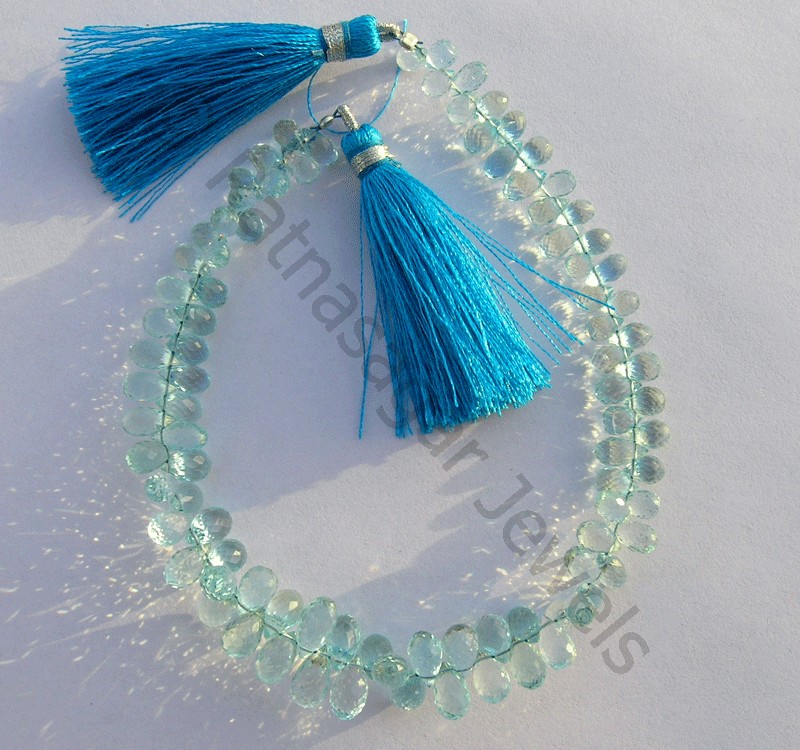
4. Lustre and appearance:
The gemstones and beads have a translucent appearance, which could differ in intensity depending on the cut made on them. With its vitreous lustre, it is very much possible to identify the purity of the stone used in beads. Intense vitreous Aquamarine gemstones beads are reserved for fashion industry exclusively.
5. Scratching and bubbling:
Aquamarine is a hard and durable gemstone. It can’t be etched or scratched easily. If you see scratches on its surface, it is highly likely that it is actually glass. Look for the bubbles inside its crystalline structure. Aquamarine gemstones don’t have bubbles, else it is glass.
6. Cut:
Aquamarine gemstones are cut into many shapes, however Emerald Cuts and Ovals are particularly popular among large-scale buyers. For beads, rough cuts and fantasy cuts are preferred as they prove to be least wasteful designs.
7. Light test:
Aquamarine is a pleochroic gemstone, revealing versatile colour shades when viewed in light from different angles. It is highly unlikely that the stone will look the same from different perspectives. If it does, it is glass for sure.
8. The green tinge:
Pure aquamarine gemstones have a greenish tinge. It usually disappears during heat treatment. Though they are flawless in their appearance, it is obvious that artificial gemstones are available at much lesser price in the market.
30d1163f-557d-41a6-af34-1ba8b99486fb|0|.0|27604f05-86ad-47ef-9e05-950bb762570c
Tags
: Aquamarine Beads . Aquamarine gemstones . Aquamarine gemstone Beads . Aquamarine gemstone Suppliers
12. September 2016 05:54 /
Manoj
/
Gemstone Beads
Comments
(0)
In recent times, Andalusite gemstones have risen in prominence in the semi-precious gem market. Known for its enchanting beauty and polymorphic appearance, buying an Andalusite is a highly revered option for brides and newly engaged couples who wish to look beyond the usual collection of rubies, garnet, emeralds and sapphires.
Here are some enticing facts about the Andalusite gemstone.
The Origin:
Andalusite is basically an aluminium mineral gemstone belonging to the families of zircons. Being a neo-silicate gemstone, it is relatively hard and can be scratched only by diamond and corundum drills. Andalusite gemstone is a trimorphic compound, meaning that it is found in the nature in three different physical forms. Other two forms are Kyanite and Sillimanite.
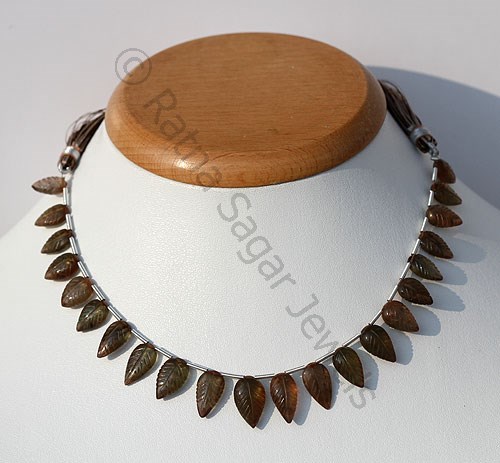
Kyanite:
It is a deep blue silicate gemstone found in metamorphic and sedimentary rocks. Other names of kyanite are disthene, rhaeticite and cyanite. It is used as abrasive item, in addition to being used as an insulator. Its major application as an Index Mineral to measure depth, temperature and pressure of metamorphic activity is specially utilized in mineralogy and mining.
Sillimanite:
Sillimanite is named after its discoverer, Benajmin Silliman, an American chemist. It was first studied in 1824, and occurs as fibrolite in twisted fibre form in metamorphic and sedimentary rocks.
Sillimanite is largely used in glass industry and reinforcement material manufacturing industry.
Andalusite and its colouring effects:
Andalusite exhibits pleochrosim with distinct combination of vibrant colours. It is mainly due to the small concentration of impurities like Manganese and Iron that manage to dope into Aluminium octahedral structure. One of the varieties of Andalusite is the Viridine, that basically has huge levels of Iron and Manganese.
High level of Manganese is revealed through its pink and whitish red or grey colour. Darker the colour, higher is the concentration of Manganese in the structure.
How to identify Andalusite:
Andalusite shares its lineage with many gemstones in the neo-silicate and beryl families. It is quite possible that even best of gemstone collectors get confused while buying Andalusite. It is commonly mixed up with sphene, smoky quartz beads, tourmaline gemstone and idocrase.
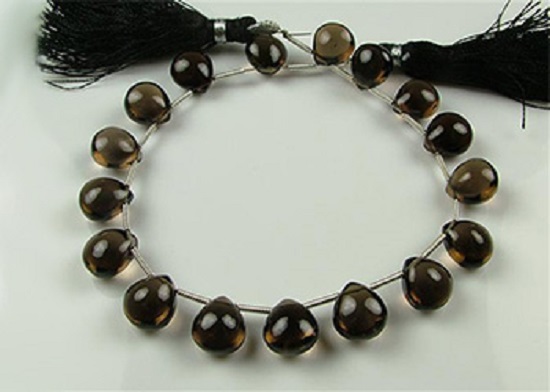
One of the distinguishing factors to identify Andalusite is its pleochroism. It exhibits a special type of pleochroic effect known as Trichroic effect, meaning that a ray of light gets split into three sections after passing the crystal.
Some gemstone collectors identify a pure Andalusite from its colour consistency and clarity. They are usually found in yellow, green and olive colours. It is common to find Andalusite in the dual colour shade, mostly in different intensities. Cutters often minimize the pleochroism by cutting the gemstone in oval, pear and marquise cuts to exemplify one particular colour.
Some natural Andalusite gemstones are translucent with dark inclusions in the form of wires and veins. They are called “Cross Stones”. They are not purely Andalusite, and sold in the market as Chiastolite.
Heat Treatments:
Pure Andalusite is hardly exposed to any heat treatment procedures. However, Chaistolite is heat treated or filled with resin to improve clarity and pass off as a pure Andalusite. Pink Andalusite are derived by treating dark green-brown gemstones , but this is mostly reversible.
Save
Save
7897c91c-2f8f-46a3-b63e-9279b79ce7f0|0|.0|27604f05-86ad-47ef-9e05-950bb762570c
Tags
: Andalusite gemstones Beads . Andalusite gemstones . Smoky Quartz Beads . Tourmaline Gemstone beads . Tourmaline Gemstones
Since the time it was first discovered, Zircon as a gemstone never quite made the cut as other established gems. However, with the advanced cutting techniques and heat treatments making their presence felt in the traditional manufacturing process, Zircon gemstone has steadily risen as a star performer in recent times. It’s often confused as “Artificial diamond”, and rated as a synthetic material. On the first note, it is not a diamond substitute; it is naturally occurring gemstone with a very different crystalline structure and composition.
The Mythology:
Hindus in the scriptures have a Heavenly Kalpa Tree, which is said to be glowing in gold due to the Zircon Halo fruits.
What is Zircon: An Introduction
Zircon exhibits high-intensity birefringence, which often gets hazed out due to double facing. It is very dense in its appearance and has a high dispersion factor and refractive index. They are mostly colourless, and reveal flashes of light—called Fire, when exposed to light. Yes, it is just as brilliant and radiant as diamond, leading to confusion since centuries; Zircon gemstone beads contain traces of radioactive substances, especially Uranium, which explains its irradiation. On Mohs scale, it has a hardnes fctor between 6.5 and 7.5, which means that it can be scratched by diamond. That’s one way to check the property of Zircon gemstone in the market.
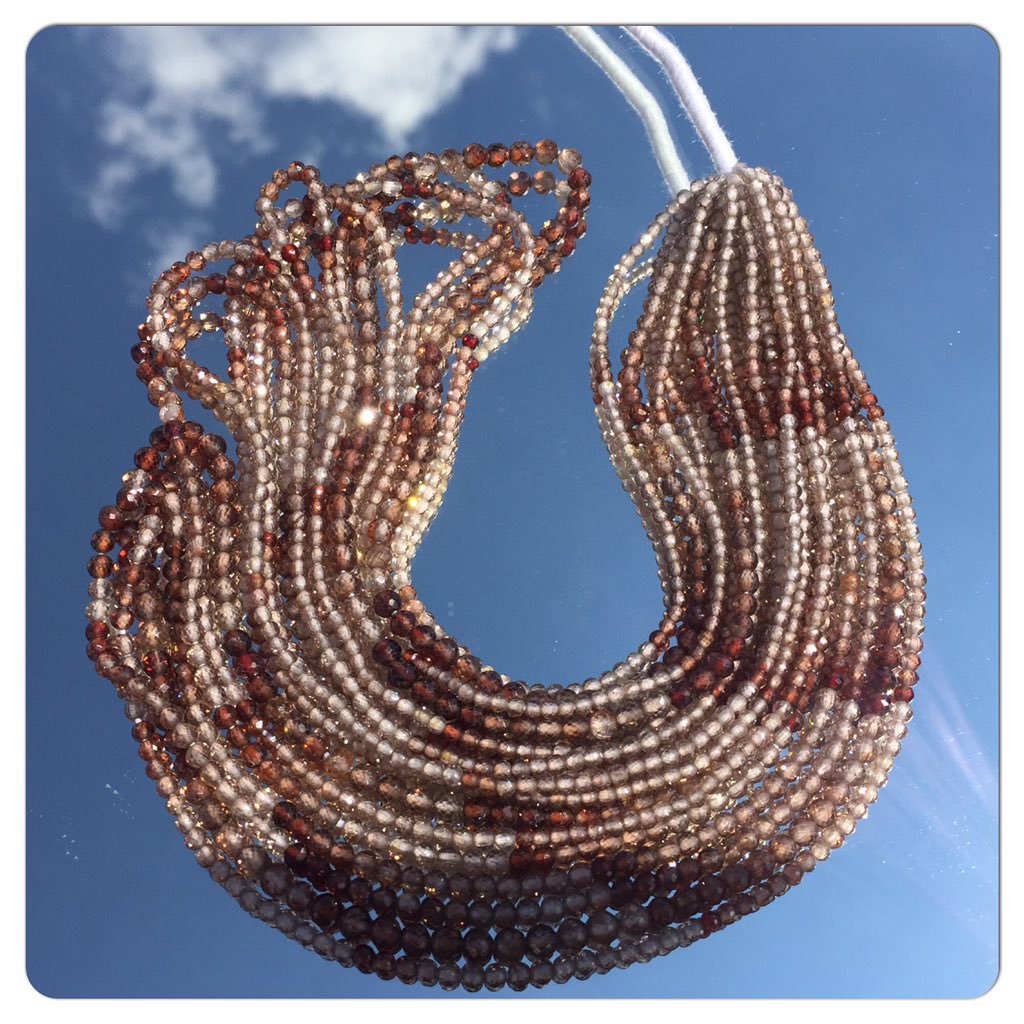
Thanks to its irradiation properties, Zircon exhibits some degree of pleochroism too.
Metamictization:
Sometimes called metamiction, Zircon gemstones undergo gradual destruction due to the presence of radioactive crystals present in its structure. Hard to believe at first, Zircon is actually the oldest known crystalline structure to be ever formed. Samples discovered in some parts of the world are actually older than Moon! During the initial formation from the molten granite, traces of highly radioactive elements condensed with cooling gemstone, resulting in the formation of Zircon. Uranium and Thorium are common radioactive impurities found in them.
Types of Zircon:
Metamictization results in formation of two types of gemstones—
• Low Zircon— High Metamictization, affecting gemstones
• High Zircon—Unaffected gemstones
Low zircons reveal higher degree of pleochroism, produced due to alpha-radiation from the Uranium/Thorium particles. This pleochroism resulting from radioactivity is called “Pleochorism Halo” or Radiohalo”.
Intensity of the radiohalo reveals the property, purity and age of the Zircon gemstone.
Colours:
Mostly colourless, Zircon with trace impurities exhibit different colours too—blue, green, yellow, violet, brown and orange/red. Blue Zircon is the most adored low Zircon available in the market, which also reveals its greenish tinge, thanks to pleochroism.
Pure green zircon, however is very rare, and hence, very expensive.
Treatments:
Zircon gemstones hardly undergo any artificial heat treatment. Darker coloured gemstones in brown and grey shades are treated mildly to produce colourless and blue varieties. Since this treatment is temporary, it is hardly given much importance.
Related gemstones:
Zircon is a neo-silicate, which has beryls and garnet in the family. Peridot gemstone, topaz gemstone, Andalusite, quartz and tourmaline are related gemstones sharing similar origin, though not as dramatic as zircon.
Save
7ffdf30e-ffa3-4e24-b9fd-c34fb3f51cf1|0|.0|27604f05-86ad-47ef-9e05-950bb762570c
Tags
: Peridot Gemstone . Topaz Gemstone . Zircon Gemstones . Zircon gemstone beads